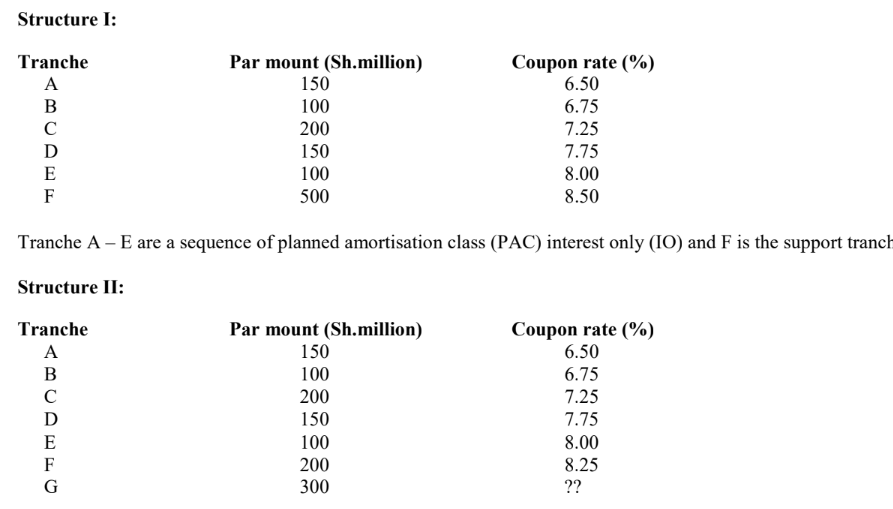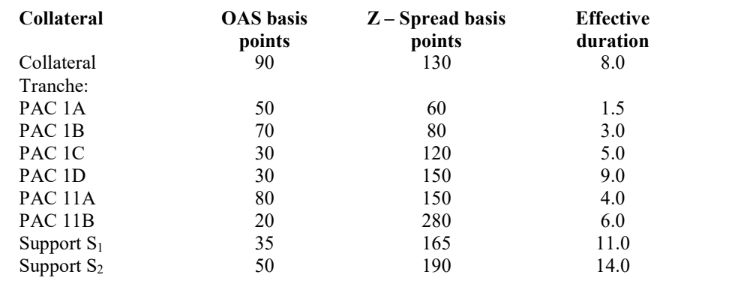TUESDAY: 6 December 2022. Morning Paper. Time Allowed: 3 hours.
Answer ALL questions. Marks allocated to each question are shown at the end of the question. Show ALL your workings. Do NOT write anything on this paper.
QUESTION ONE
1. Outline FOUR characteristics that distinguish separately managed accounts from investment funds. (4 marks)
2. Explain THREE types of alternative investment structures. (6 marks)
3. The following information relates to a real estate property owned by Hamza Holding Ltd.:

Required:
Using the cost approach, determine the value of Hamza Holding Ltd.’s property. (4 marks)
4. A single-tenant office building was leased six years ago at a cost of Sh.12,000,000 per year. The next rent review occurs in two years. The estimated rental value (ERV) in two years based on current market conditions is Sh.15,000,000 per year. The all risks yield (cap rate) for comparable fully let properties is 10%. Because of lower risk, the appropriate rate to discount the term rent is 8%.
Required:
The value of the office building using term reversion method. (6 marks)
(Total: 20 marks)
QUESTION TWO
1. Highlight FOUR areas of regulation of hedge funds. (4 marks)
2. Explain THREE classification of participants in the alternative investments environment. (6 marks)
3. A company’s founders believe that their company can be sold for Sh.60 million in four years. The company needs Sh.6 million in capital now and Sh.3 million in three years. The entrepreneurs want to hold one million shares. The venture capital firm uses a discount rate of 20% over all four years.
Required:
The post-money valuation at the time of second round financing. (1 mark)
The post-money valuation at the time of first round financing. (2 marks)
The required fractional ownership for the second round investors. (1 mark)
The fractional ownership for the first round investors after dilution by the second round investors. (2 marks)
The share price after the first round of financing. (2 marks)
The share price after the second round of financing. (2 marks)
(Total: 20 marks)
QUESTION THREE
1. Outline THREE differentiating characteristics of commodity indexes from other indices. (3 marks)
2. Enumerate FOUR requirements that must be met by a special purpose vehicle (SPV) in order to give assurance that its assets are free from bankruptcy risk. (4 marks)
3. Consider a nine month forward contract on a commodity that trades at a spot price of Sh.100. The commodity has market wide convenience yields of 3%, storage costs of 2% and financing costs of 7%.
Required:
The price of a ten-month forward contact. (3 marks)
4. An issuer is considering the following two collateralised mortgage obligation (CMO) structures:

Tranche A – E are a sequence of planned amortisation class (PAC) interest only (IO), tranche F is a PAC II and tranche G is a support tranche without schedule.
Required:
In structure II, tranche G is created from tranche F in structure I, calculate the coupon rate for tranche G assuming that the combined coupon rate for tranches F and G in structure II should be 8.5%. (6 marks)
Explain the effect on the value and average life of tranche A to tranche E by including the PAC II in structure II. (2 marks)
Explain the difference in the average life variability of tranche G in structure II and tranche F in structure I. (2 marks)
(Total: 20 marks)
QUESTION FOUR
1. In relation to equity crowdfunding, outline THREE benefits of equity crowdfunding as a form of alternative investment. (3 marks)
Summarise FOUR risks associated with equity crowdfunding. (4 marks)
2. An analysis of an agency CMO structure using Monte Carlo simulation model based on 12% volatility found the
following:

Required:
The option cost for PAC 1A, PAC IIA and support S1. (3 marks)
The PAC tranches that is expensive in the deal on a relative value basis. (2 marks)
The support tranche which is expensive on a relative value basis.
[Hint: Support tranches are PAC IIA, PAC 11B, support S1 and support S2]. (2 marks)
3. An investor is considering a Sh.100 million collateralised debt obligation (CDO) structure with the coupon rate to be offered at the time of issuance is shown below:

The collateral consist of bonds that all mature in 10 years and the coupon rate for every bond is the 10 year treasury rate plus 400 basis points. The investor enters into an interest rate swap agreement with another party with a notional amount of Sh.80 million in which he agrees to do the following:
1. Pay a fixed rate each year equal to the 10 year treasury rate plus 100 basis points.
2. Receive secured overnight financing rate (SOFR).
The 10 year treasury rate at the time the CDO is issued is 7%.
The asset management fee paid is Sh.634,000.
Required:
Calculate the annual return available to the subordinate/equity tranche. (6 marks)
(Total: 20 marks)
QUESTION FIVE
1. Highlight FOUR disadvantages of direct investing in an alternative investment. (4 marks)
2. Assess TWO biases in hedge fund databases that appear to increase the return or decrease the risk of investing in hedge funds. (4 marks)
3. The following collaterised mortgage obligation (CMO) structure is backed by 8% collateral:

A client wants a notional interest only (IO) with a coupon rate of 8%.
Required:
Calculate the notional amount for this notional interest only CMO. (6 marks)
4. The limited partners in a private equity fund make a Sh.200 million contribution in the first year to fund an investment. The terms of agreement provides for a 6% hurdle rate, a 100% catch-up and an 80/20 carry split. The investment is sold by the fund in the second year for Sh.300 million.
Required:
Determine the amount that is received by the following at the end of second year:
Limited partners. (3 marks)
General partner. (3 marks)
(Total: 20 marks)
